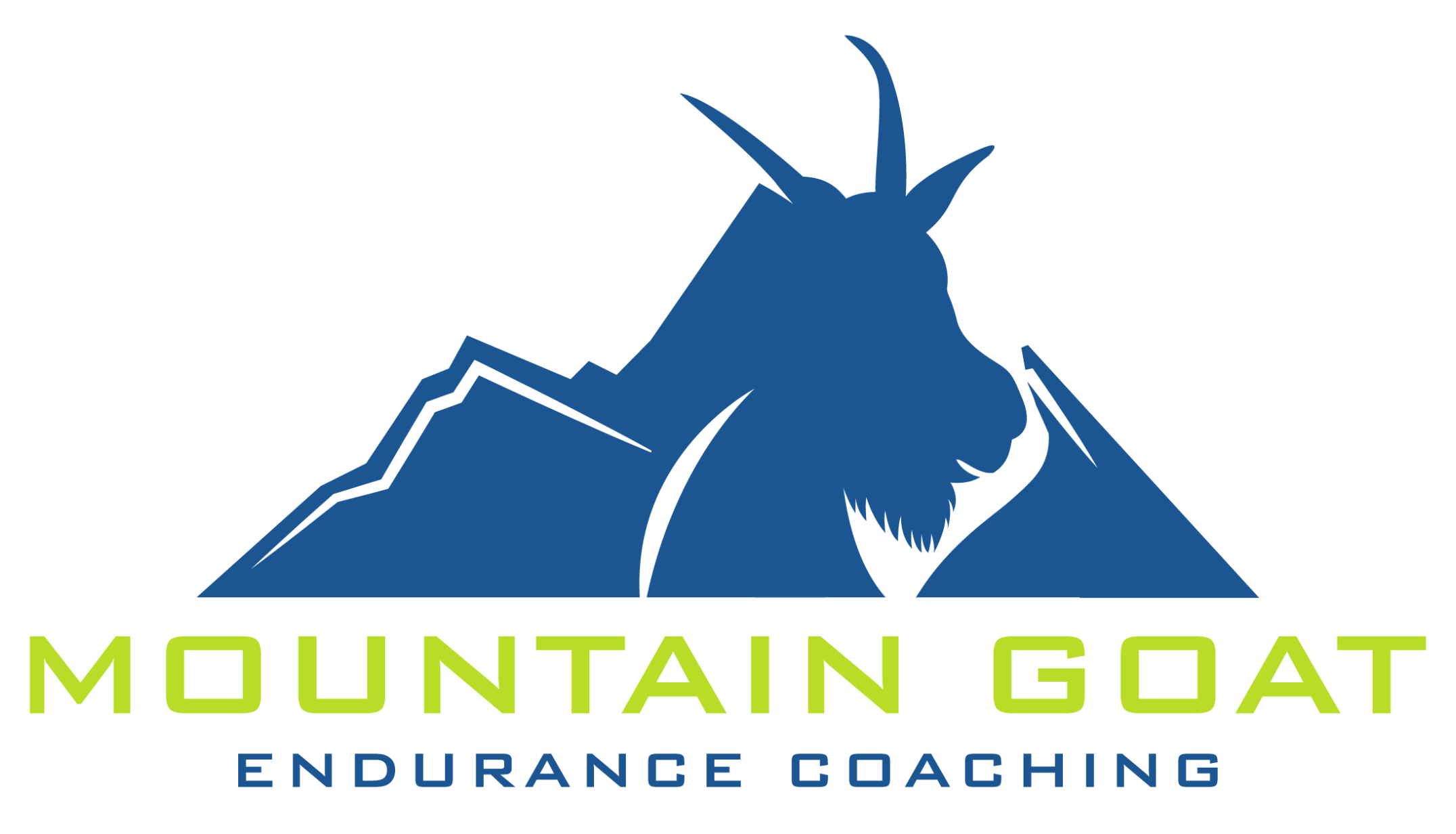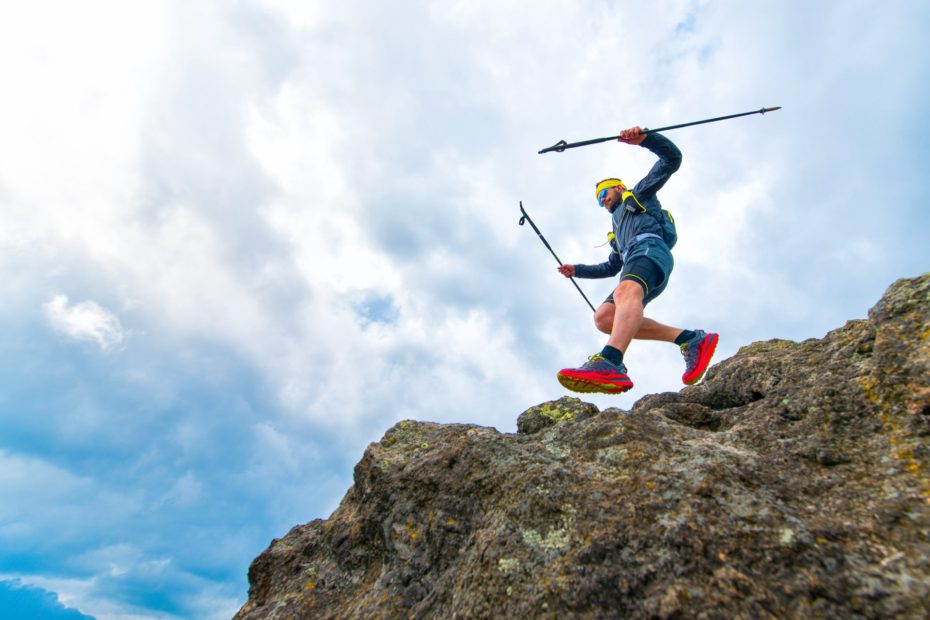As I write this, I’m staring at Snowbird – the location of the Speedgoat 50k.
For those who don’t know, it’s an insane race with 12,000 feet of climbing. Karl Meltzer’s website specifically says, “REMEMBER THIS IS A HARD RACE, IF YOU FEEL LIKE THIS SHOULD BE YOUR FIRST 50K, YOU ARE PROBABLY WRONG IN YOUR ASSUMPTIONS.”
While I’ve never run that race, I know I’m very privileged to have access to amazing mountains less than 2 miles from my door.
I also realize that’s not the case for a lot of people.
So how do you get better at running downhills when you don’t have that access?
First, let’s look at what makes downhill running so hard.
Run Downhill = Destroy Your Quads
When you run downhill, you hammer your quads.
Even though your leg is bending, your quad is contracting – you’re creating tension in your quad even though the muscle is getting longer.
Let’s think about your quadricep and how it usually contracts. When your quad gets shorter – ie contracts – it straightens your knee.
When you run downhill, even though you’re going from a straight leg to a bent leg, you’re still contracting your quad. This contraction under a lengthening phase is called an “eccentric muscle contraction.
Why do you care?
Great question.
Eccentric muscle contractions create a ton of muscle damage.
Bodybuilders have been leveraging this fact for decades to get bigger muscles. If you prioritize the eccentric part of any contraction, it creates a lot of little microtears in the muscle fibers. When the muscle repairs, it gets bigger, which is the whole goal for bodybuilders. It also feels really rough for a couple of days – not the best when you’re trying to run for hours on end.
When it comes to uphill running, the limiter for most people is typically the lungs.
When it comes to downhill, the limiter is typically the legs.
If you want to get better at downhill, what you need to build stronger quads and then learn how to put them to good use.
Stronger Quads Option 1 – Stair or Hill Repeats
If you live in a city, go find a tall building, take the elevator up, and run down the stairs.
Then do it again.
And again.
And probably again.
Even most small cities still have a few tall buildings that you can use for stair repeats.
Sounds really boring, but it definitely works.
Side Tangent: You can do the same thing for uphill – take the stairs up and take the elevator down – but that’s a different article…
Even if you have access to a small hill, then work with that.
Have a a hill of 100-200 feet? Great. Hike up the hill and then bomb down it.
And by “bomb” I mean “run down just at the edge of your comfort zone” – ie push it, but don’t push it so hard you fall down and get injured. If you’re going to push the limits, do it during your A race. Not during downhill training repeats.
Stronger Quads Option 2 – Strength Training
What if you have little to no access to elevation? What if you live in the middle of flat farmland with no big buildings or hills anywhere within a 2 hour radius?
Then strength training is the solution to improve your downhill game.
When you’re training, you’re going to want to accentuate the eccentric – “down” portion – of each movement because it will mimic the eccentric contractions of running downhill.
Start by choosing an exercise that works your quads.
Here are a few of your many options:
- Close Squats
- Heel-Elevated Squats
- Bulgarian Split Squats
- Hack Squats
- Single-Leg Leg Presses
- Rear Lunges
- Split Squats
- Sissy Squats
- Leg Extensions
- More …
Once you choose your exercise, go really slow on the eccentric portion – we’re talking 4, 5… 10 seconds – then explode back to top.
Do 2-5 sets of 10-15 reps.
By the time you’re done, you’ll really wish you had some hills to run because your quads will be screaming.
To be clear, options 1 and 2 are not mutually exclusive – I like to do both – but you have to work with what you have.
If what you have is flat, then double down on the strength.
Need a good strength guide? Good news!
I have one.
Go here to download Strength Training Secrets for Ultra Runners.
Agility Work
In addition to strength, another essential factor to running downhill is agility.
If you want to move run downhill without falling or using your shoes as really short skis, you’ll need to be able to move your feet quickly.
They’ve shown that runners who played other sports in their past – like soccer or basketball – often have fewer injuries than those who “just” run. Some of that is different muscle recruitment, but a lot of it seems to correlate with lateral agility and stability (see next section).
So if you want to bomb those downhills without getting injured, you want to make sure and build those aspects of your game.
For those of us who have access to downhill, woohoo. Go practice running downhills just at the edge of your comfort zone.
As you do that, your comfort zone will expand and your pace will improve.
For those who don’t have that option, you get to do a little more targeted work.
When it comes to agility, you can start using an agility ladder a few times a week. They’re cheap and with a few weeks of practice you can really start to improve your foot speed.
In the past, I actually made an agility ladder out of duct tape while living in South Korea because I couldn’t find one on Gmarket.
A little time on the agility ladder also works well as a warmup for your runs, so you can do an easy 2-in-1 here – prep for your run as you improve an essential part of your downhill game.
Here are 2 affordable options with a ton of reviews. I have no affiliation to either of them.
And here’s a video with 30 different drills you can do. Start easy and focus on foot speed. I particularly like drills like the Icky shuffle and Heisman shuffle, but you’ll have to build to those if you’ve never used one before.
Stability Work
Take it from someone with a history of ankle damage – stability is key.
You can have the quickest, most agile feet in the world, you still want to make sure your foot is stable when it lands.
I can hear it now: “Great… another thing I have to do. Can I just run?”
Good news: you don’t really need special stability work. You can just target a lot of unilateral (single-side) stuff in your strength programming.
Instead of a regular squat, do split squats, Bulgarian split squats, or pistol squats.
Instead of deadlifts, do single-leg deadlifts or kickstand deadlifts.
These unilateral motions still help you get strong, and they target additional stability that will help your running game.
If you really feel like you need to add specific stability work, you can do single-leg toe touches. Need something harder? Stand on a foam pad while doing those.
If you’re able to do 10-15 of those per side, you’re probably pretty stable.
Trail Sighting
Even if you can’t run downhill, you can still work on your trail sighting. Go find yourself a trail with some gnarled roots or weird rocks or another place with jagged, unstable surfaces. Then practice looking ahead as you run.
Getting better at trail sighting – the ability to keep your eyes ahead of you while also keeping an eye on your footing – is huge for running downhills.
Have you ever had that experience where you get to the top of a staircase and you thought there was one more step, but there wasn’t? Didn’t you land a little funny and feel unstable?
There wasn’t a lack of stability or agility or strength there. You were on flat ground.
You just didn’t land where you thought you were going to land and things got weird.
Same idea on the trails – except with higher consequences.
Instead of feeling slightly silly, you might fall down or get hurt.
Learning to get good at trail sighting can be one of the most under-looked pieces of the puzzle when it comes to running downhills well.
You can be strong, stable, and agile – you need to know where your feet are going to land.
So go find a weird, unstable surface to run on and you won’t feel like so many roots and rocks are hopping out to surprise you on race day.
A Final Note
Braking is the enemy.
When you run downhill, you ideally want to “flow” as much as possible. The more you’re trying to slow down, the more you’re damaging your quads.
If you could just flow down the hill like water or move your feet as fast as the Road Runner, you’d have very little muscle damage.
Unfortunately, that’s not always possible.
If you’re coming down a 20% grade, you’re going to put on the brakes. That said, the more you can minimize the braking and just let things flow, the better.
So get strong quads, build some agility and stability, and learn to look ahead.
You can make a lot of improvements on downhill very quickly.
If you’re willing to ease into it and live just at the edge of your comfort zone, you’ll find that zone quickly expanding – and it will make you a much better trail runner.

